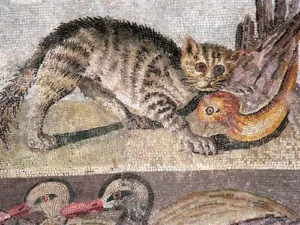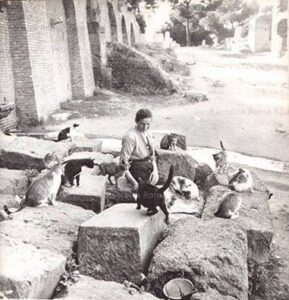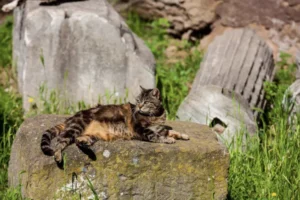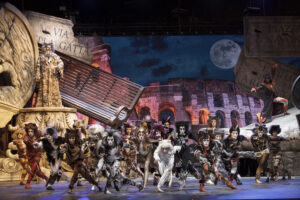Rome
A Paw-sitively Roman Adventure: A Guide to Rome's Cats
Rome, a city steeped in history and culture, has a deep-rooted connection with its feline inhabitants. Cats have been an integral part of Roman life for centuries, their presence woven into the fabric of the city’s history and culture. Wondering where you can meet them? Read along!
A Historically purrfect partnership
The relationship between Romans and cats dates back to ancient times. Romans were known for their practical approach to animal husbandry, and cats were valued for their ability to control rodent populations. This practical benefit cemented the cats’ place in Roman society.

But beyond their practical role, cats have also held cultural significance in Rome.
Throughout history, many famous Romans have expressed their love for cats. One notable example is the poet Catullus, who wrote several poems about his pet cat, Bituitus.
Particularly in the Empire Age, felines were considered sacred by Romans, influenced by the cult of Isis, an Egyptian goddess who was widely worshiped in Rome at that time. Isis was often depicted with a cat or a sacred cat cub, symbolizing her protective and nurturing qualities.
Rome’s Gattare: a Millenary Love Story
The cult of Isis was particularly popular among women, who sought her help in matters of love, fertility, and childbirth.
This connection between cats and women is also reflected in the Italian language: the word gattara is Roman slang which refers to a woman who cares for stray cats. These dedicated individuals play a crucial role in the lives of Rome’s feline population, providing food, shelter, and medical care to cats in need.

Cats in Modern Rome
Today, cats continue to thrive in Rome. They can be found strolling through the city’s historic squares, lounging in sunny windowsills, and exploring the ancient ruins. Many Romans have a deep affection for cats and treat them as cherished members of their families.
Here’s a few places where you can meet them, or even support them with donations, while you enjoy the beautiful sceneries of the Eternal City:
- Piramide Cestia: https://maps.app.goo.gl/p7zLBeKxkQdKdzXu5
The ancient Roman tomb of Piramide Cestia is also a sanctuary for a thriving colony of cats. These felines have made the pyramid their home, adding a touch of charm to the historic site. - Porta Magica: https://maps.app.goo.gl/xs7C6V7UHJrQcLJPA
Porta Magica, a mysterious archway located in the Prati district of Rome, is also home to a small but friendly feline colony. They can often be seen lounging on the steps or exploring the surrounding area. - Torre Argentina: https://maps.app.goo.gl/5YesZ5ZmA9iUXcwo6
Torre Argentina, a historic archaeological site in Rome, is renowned for its thriving feline colony. This group of cats has made their home in the ruins of ancient Roman temples, creating a unique and heartwarming sight. - Cimitero Monumentale del Verano and Cimitero Acattolico: https://maps.app.goo.gl/ctSfTb9d1V6sqKsk8
These two cemeteries in Rome, known for their historical significance and beautiful architecture, are also home to feline colonies. The cats have found refuge among the tombs and monuments, creating a unique and peaceful atmosphere.

Bonus: CATS – A Roman Meow-sical
The iconic musical CATS has been adapted for Italian audiences in 2023 with a unique Roman twist. Set against the backdrop of the Eternal City, this Italian production captures the essence of the original while incorporating elements of Roman culture and history.
With Ancient Roman ruins in the stage background, the musical’s setting provides a captivating and authentic backdrop for the Jellicle Cats’ annual Jellicle Ball.
You can enjoy this endearing performance, for the second consecutive year, at Teatro Sistina starting May 2025

How to get there: https://maps.app.goo.gl/vmqf5HZtcmM52A5E6
The bond between Romans and cats is a testament to the enduring love and respect that humans can have for animals. Cats have played a vital role in the history and culture of Rome: as the city continues to evolve, the presence of cats will undoubtedly remain a cherished part of its identity.
